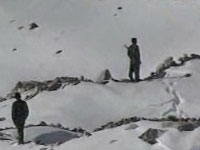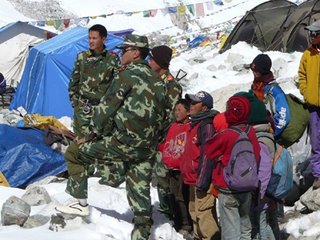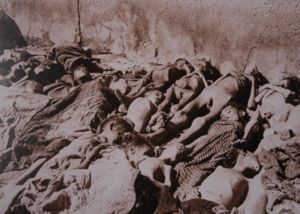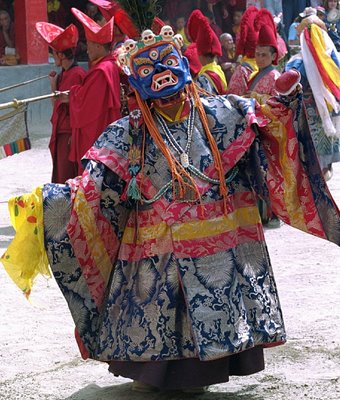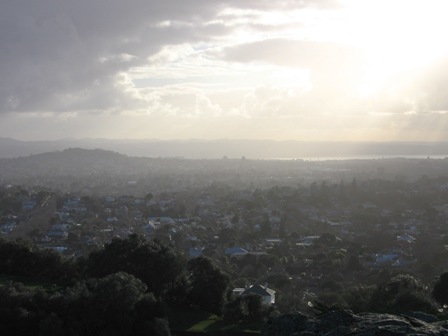Undergound Press/Counterculture/FeminismI read this article about one woman's views on the birth of the counterculture - you might find it interesting and relevant in this age of blogging.It was the decade of love and peace. But without its irreverent free press, the Sixties would never have changed the world. Rosie Boycott takes a trip back to the birth of the counterculture
Power to the People Sunday October 8, 2006
The ObserverI turned 17 in the summer of 1967. That summer I smoked my first joint at a Rolling Stones Concert in Hyde Park and walked barefooted through the hot streets of west London, wearing floral bell-bottomed trousers and a coat I'd made out of a silk tablecloth that had belonged to my grandmother, which had long tassels and small daisies embroidered in purple thread.
I was still officially living at home with my parents in the heart of the Shropshire countryside and one sweltering August afternoon I had to meet my mother, who'd come to town for the day, to join her on the train journey home. I hadn't slept for what seemed like days, I'd been up at the Round House listening to Jefferson Airplane and the Crazy World of Arthur Brown. I'd been smoking a lot of dope and I'd gone home with the manager, who wore a beautiful blue velvet jacket and drove a matching coloured Saab. I'd been meeting up with some Peruvian radicals in the Troubadour Cafe to help plan a Vietnam march. To my mind, there was no contradiction between the two worlds. My head was full of thoughts of drugs, revolution, the words of Che Guevara and the psychedelic visions of Aldous Huxley.
And my mother went ballistic about my feet.
Standing in Paddington station, the commuter traffic streaming past us - anxious then as now to catch the train to take them home to their suburban life (then my idea of hell) - my mother ranted and raved about the disgrace of walking through London with dirty feet. I remember looking at her, not upset, not angry, just full of sympathy that she didn't get it.
It was a whole new world, as I saw it, freed from bourgeois shackles. The aim of the counterculture was to shake up the existing situation, to change the world of the pinched grey people who lived grey lives in grey bedrooms. We wanted to elevate non-material values through the global power of rock'n'roll, and we believed we could do this through drugs, music, having fun, hanging out. Rules were simple: there were good guys and bad guys, the narcotics police were bad, governments were bad, war was bad, the mainstream media was bad. Under the powerful vibes of the good people all these would somehow fade away.
It was extraordinary arrogance, but we thought that we would be responsible for a moral advance that would match the technological advances of the previous hundred years. And I was having fun, more fun than I could remember, and I couldn't see why it wouldn't last for ever, and I couldn't see why it couldn't be communicated and shared by everyone, including, in that instance, my mother, fretting on the station concourse in a neat blue suit, white blouse and high heels. She may even have been wearing a hat.
My first job was on an underground newspaper called Frendz. We operated from a chaotic office which spanned two floors of a run-down terrace at the top of the Portobello Road. Out on the street, jokers and pranksters with beads, bells and mantras riffled through tatty bargains and baubles on the street stalls. We never had any money and as one holding company went broke, we'd create another, changing the magazine from Friends to Frendz to keep within the law.
Donations came in the strangest shapes: one day a woman arrived with a dirty white handbag stuffed with five pound notes which she proceeded to throw around the office like Kleenex. She needed somewhere to stay and installed her own set of old rusty bed springs under a window, where she lay, naked and exposed, while the office bustled by around her. The contents of her bag paid the print bills, but how we all actually survived is a mystery I cannot fathom to this day. We lived well, but my pay fluctuated between £5 and £10 a week.
We had a naive belief in our right to do things and to do things big. Earlier in the decade, because Allen Ginsberg happened to be in town, it was decided to rent not just a small local community centre but the Albert Hall to stage a poetry reading, The time from idea to event was a mere 10 days. RD Laing, the counterculture hero, brought all the schizophrenic patients from his clinic along to the gig in the belief that poetry might inspire them. At the launch of IT magazine, Britain's first underground newspaper, Paul McCartney came dressed as an Arab. The party was held in the Round House and someone had made a giant jelly using a bathtub as a mould. Pink Floyd's van ran into it before the party even began, leaving sticky liquid oozing across the floor.
We published the magazine every fortnight, pulling together a disorganised collection of stories, reports, jokes and cartoons. Why was the Reading Festival such a disaster (The police? The site? The rain? The faulty PA system?) What was the current world price of dope? And where could you find the best stuff? Where were the latest Vietnam protests taking place? What on earth were auras? Frendz had been started by my then boyfriend, the lexicographer Jonathon Green, and a South African called Alan Marcuson. The original designer was Barney Bubbles, who had been to San Francisco and met the Grateful Dead, which gave him instant street cred. Barney would disappear every week or so, rucksack on his back, and vanish into the countryside, where he'd drop an enormous amount of acid.
People would appear and disappear. Stanislav Demidjuk, a vision in brown leather, a silver belt and an Australian accent, showed up one day and persuaded Alan and Jonathon that blowing up the Paddington Green Police Station was necessary for the Revolution. They all climbed into a cab to carry out the task, but en route Stan stopped off to visit Richard Branson, with whom he'd fallen out over the political direction of Student Magazine (Branson's first business venture). A fight ensued and the mission was abandoned.
I couldn't type so I was given an editorial job. I wrote short pieces, helped lay out pages and one day, six weeks into the job, I was handed a tape recorder and told to get along to the Apple offices in Savile Row to interview John and Yoko. Yoko's book Grapefruit had been disastrously reviewed and England's most famous couple needed soothing words from the underground press. Yoko talked non-stop, small and fierce under her wild black hair, while I worried that the tape recorder wouldn't work. I wanted to talk to John about the Sergeant Pepper album: there was a hippy belief that if you read the album cover upside down, you could discover the secret phone number of the Beatles. By chance, the numbers actually led callers to the Guardian's night newsdesk, which took calls from around the world asking how John and Paul were doing. Had this been part of the plan, I wondered. When I finally managed to break through Yoko's monologue, John looked at me over his famous wire-rimmed spectacles and mumbled, 'Yeah, cool, man, really cool.'
By the time I arrived at Frendz in 1970 the glory days were almost over. In the middle of the Sixties the various factions - spiritual, political, psychedelic and radical - had managed to combine their differences, united in a belief that change, any change, was better than the status quo. By the end of the decade the more radical camps were in ascendance, the hippies with their love and peace life style consigned to a back water. Laid back, in the end, had meant losing out, and the hippy philosophy, which eschewed commercialism, paved the way for the culture's own demise.
When the establishment saw the commercial potential in health food, country-style furniture and kaftans, and produced Laura Ashley and Terence Conran, the hippies thought it was a good joke. Especially laughable was the news that cigarette companies had taken out patents on the brands of dope they intended to sell when marijuana was legalised. In the Frendz office we were visited increasingly by people with political axes to grind: IRA activists, the Black Panthers, the black radical Hakim Jamal, author of From the Dead Level (he was later shot in a gangland killing in Boston). In the winter of 1970 a group of women came who proposed that Frendz should publish a women's issue.
Over that autumn, Angie Weir and Hilary Creek were in and out of the office. For me, it was a revelation. The counterculture had championed change of every kind, but the role of women hadn't changed. Women still made the tea and did the typing: only now they were also expected to have sex with anyone who wanted it: to refuse was uncool and, God forbid, acting like a straight. Richard Neville, the editor of Oz, was quoted as saying, 'You can fuck any time, but ask a girl to make Ovaltine?'
Once the issue had gone to the press, Angie and Hilary disappeared. I saw them next in the Old Bailey where they were facing charges related to the Angry Brigade bombings. Biba had been blown up while the Frendz women's issue was going to press. They called me as a witness, but since I kept no diary and thus couldn't recall the dates accurately enough to provide an alibi, I wasn't much use and they were sent down for eight years.
The women's issue changed my life. Even though in 1969 the International Times, Britain's oldest underground paper, was condemning Miss World, the counterculture remained as male-dominated as the rest of British society. Mecca and Miss World were neat symbols of big business, capitalism and plastic living. The editors could sigh complacently because they weren't asking their girlfriends to parade around in swimsuits - but they weren't encouraging them to become reporters either. By 1970 feminism was becoming fashionable, but in Richard Neville's book, Playpower, the closest the index came to mentioning the women's movement was the 'Female Fuckability Test.' With Marsha Rowe, an Australian working on Oz magazine, I organised a series of meetings for women who worked in the underground press. A calm start soon gave way to animated disclosures about abortions, orgasms and humiliations at work. By the end of the third meeting we'd decided to start a magazine.
Spare Rib was launched in the summer of 1972. I was 21 and Marsha was 28. We had £3,000 in the bank and some old furniture we'd acquired from the offices of INK, a weekly paper that promised to bring a political edge to the counterculture, but collapsed into bankruptcy in under six months. No one thought we had a chance, but the time was right, the cash somehow kept appearing, and Spare Rib went on to publish for the next 20 years, helping to shape and define the feminist debate that has so changed British culture.
Would it have happened without the underground press? Probably, but not so soon and not on so few resources. The culture may have been flaky, but it allowed us to believe that anything was possible. The arrogance that helped bring about the counterculture's demise gave us an extraordinary sense of confidence. Looking back, it is hard to believe that at 21, I thought I had the right to publish a magazine which challenged the very heart of Western social structures. We used to call the established media the straight press and, much to our delight, they took us seriously. Feminism became the first cause which genuinely crossed the divide as it established itself in Britain.
Today, the original feminist beliefs of sisterhood, tolerance and a better world for both the sexes are all but forgotten, except on the net, where blogs unite women living in societies where they have no rights. Our Sixties equivalent of the 'straight press' is now known as 'dead-tree media'. The counterculture in the Sixties came about in response to a need and it is clearly still here today.
· 200 Trips From The Counterculture, by Jean-Francois Bizot, is published by Thames & Hudson at £19.95
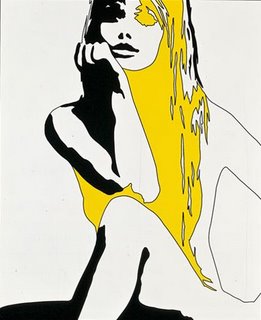 If anyone is wondering where I am, I have been writing on the blog Reading The Maps. Which has meant I have been neglecting my on blog alittle. In the meantime check out Reading the Maps and my comments there.
If anyone is wondering where I am, I have been writing on the blog Reading The Maps. Which has meant I have been neglecting my on blog alittle. In the meantime check out Reading the Maps and my comments there.
